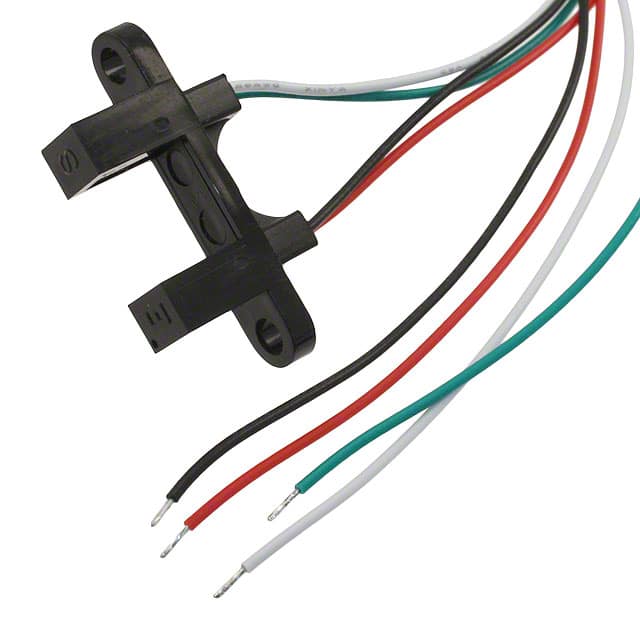Viz Specifikace pro podrobnosti o produktu.

OPB801W55Z
Product Overview
The OPB801W55Z belongs to the category of optical sensors and is commonly used for detecting the presence or absence of an object. This sensor is characterized by its compact size, high sensitivity, and reliable performance. It is typically packaged in a small, durable housing and is available in various quantities to suit different application needs.
Specifications
- Operating Voltage: 5V
- Output Type: Phototransistor
- Sensing Method: Reflective
- Sensing Distance: Up to 5mm
- Package Type: Through Hole
- Package Quantity: 50 units per pack
Detailed Pin Configuration
The OPB801W55Z features a standard 4-pin configuration: 1. VCC (5V) 2. GND 3. Signal Output 4. N/C (Not Connected)
Functional Features
- High sensitivity to detect objects within the specified range
- Reliable performance in various environmental conditions
- Compact design for easy integration into different systems
Advantages and Disadvantages
Advantages
- Small form factor
- High sensitivity
- Reliable performance
Disadvantages
- Limited sensing distance
- Susceptible to ambient light interference
Working Principles
The OPB801W55Z operates based on the principle of reflective sensing. When an object is within the sensor's range, it reflects the emitted light back to the phototransistor, causing a change in the output signal.
Detailed Application Field Plans
The OPB801W55Z is widely used in the following applications: - Object detection in automated assembly lines - Paper jam detection in printers and copiers - Proximity sensing in robotics and automation
Detailed and Complete Alternative Models
Some alternative models to the OPB801W55Z include: - TCRT5000: Similar reflective optical sensor with adjustable potentiometer - EE-SX670: Compact reflective sensor with longer sensing distance
In conclusion, the OPB801W55Z is a versatile optical sensor that offers high sensitivity and reliable performance in various applications, despite its limited sensing distance and susceptibility to ambient light interference. Its compact design and ease of integration make it a popular choice for object detection and proximity sensing in diverse industries.
Seznam 10 běžných otázek a odpovědí souvisejících s aplikací OPB801W55Z v technických řešeních
What is OPB801W55Z?
- OPB801W55Z is a reflective object sensor that consists of an infrared LED and a phototransistor in a single package.
What are the typical applications of OPB801W55Z?
- OPB801W55Z is commonly used for object detection, position sensing, and counting in various technical solutions.
What is the operating voltage range for OPB801W55Z?
- The operating voltage range for OPB801W55Z is typically between 4.5V to 5.5V.
How does OPB801W55Z detect objects?
- OPB801W55Z uses the reflection of its emitted infrared light to detect the presence or absence of an object.
What is the sensing distance of OPB801W55Z?
- The sensing distance of OPB801W55Z is approximately 0.2 inches (5.08 mm).
Can OPB801W55Z be used in harsh environments?
- OPB801W55Z is not designed for harsh environments and may require additional protection if used in such conditions.
What is the output type of OPB801W55Z?
- OPB801W55Z provides a digital output signal, making it suitable for interfacing with microcontrollers and digital logic circuits.
Is OPB801W55Z sensitive to ambient light?
- OPB801W55Z is designed to minimize the effects of ambient light, but excessive ambient light can still affect its performance.
Can OPB801W55Z be used for speed sensing applications?
- OPB801W55Z can be used for speed sensing by detecting the presence or absence of objects passing by at a high frequency.
Are there any specific considerations for integrating OPB801W55Z into a technical solution?
- When integrating OPB801W55Z, it's important to consider factors such as mounting orientation, ambient light levels, and potential interference from other infrared sources.

